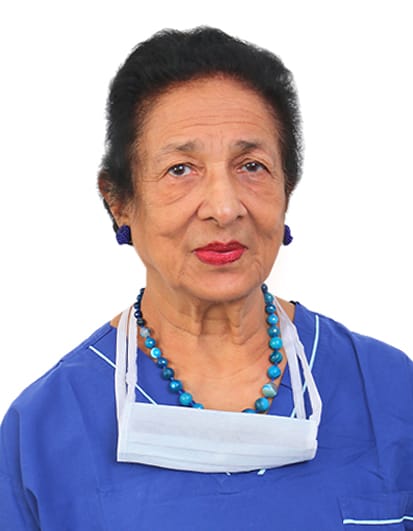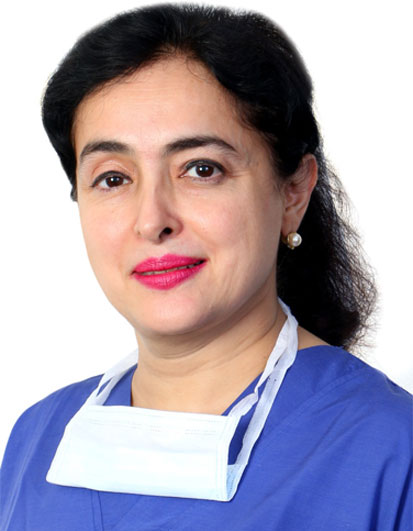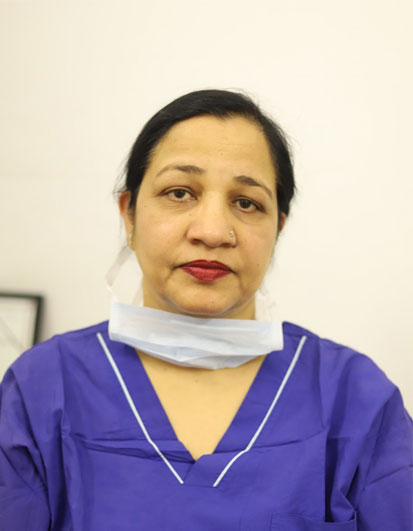
Surgery for Breast Cancer
Most women with breast cancer have some type of surgery as part of their treatment. Depending on the
situation, surgery may be done for different reasons. For example, surgery may be done to:
- Remove as much of the cancer as possible (breast-conserving surgery or mastectomy)
- Find out whether the cancer has spread to the lymph nodes under the arm (sentinel lymph node biopsy or axillary lymph node biopsy dissection)
- Restore the breast’s shape after the cancer is removed (breast reconstruction)
- Relieve symptoms of advanced cancer
Surgery to remove breast cancer
There are two main types of surgery to remove breast cancer:
- Breast Conserving Surgery - (also called a lumpectomy, quadrantectomy, partial mastectomy, or segmental mastectomy) – in which only the part of the breast containing the cancer is removed. The goal is to remove the cancer as well as some surrounding normal tissue. How much of the breast is removed depends on the size and location of the tumor.
- Mastectomy – in which the entire breast is removed, including all of the breast tissue and sometimes other nearby tissues. There are several different types of mastectomies. Some women may also get a double mastectomy, in which both breasts are removed. (See “Mastectomy.”)
Choosing between breast-conserving surgery and mastectomy
Many women with early-stage cancers can choose between breast-conserving surgery (BCS) and mastectomy. The main advantage of BCS is that a woman keeps most of her breast. But in most cases she will also need radiation. Women who have mastectomy for early stage cancers are less likely to need radiation.
For some women, mastectomy may clearly be a better option, because of the type of breast cancer, the large size of the tumor, previous treatment history, or certain other factors.
Surgery to remove nearby lymph nodes
To find out if the breast cancer has spread to axillary (underarm) lymph nodes, one or more of these lymph nodes will be removed and looked at under the microscope. This is an important part of figuring out the stage (extent) of the cancer. Lymph nodes can be removed either as part of the surgery to remove the breast cancer or as a separate operation.
Breast reconstruction after surgery
After having a mastectomy (or some breast-conserving surgeries), a woman might want to consider having the breast mound rebuilt to restore the breast’s appearance after surgery. This is called breast reconstruction.
There are several types of reconstructive surgery, although your options may depend on your medical situation and personal preferences. You may have a choice between having breast reconstruction at the same time as the mastectomy (immediate reconstruction) or at a later time (delayed reconstruction).
If you are thinking about having reconstructive surgery, it’s a good idea to discuss it with your breast surgeon and a plastic surgeon before your mastectomy. This gives the surgical team time to plan out the treatment options that might be best for you, even if you wait and have the reconstructive surgery later.
Breast-conserving surgery (lumpectomy)
Breast-conserving surgery is sometimes called lumpectomy, quadrantectomy, partial mastectomy, or segmental mastectomy. In this surgery, only the part of the breast containing the cancer is removed. The goal is to remove the cancer as well as some surrounding normal tissue. How much of the breast is removed depends on the size and location of the tumor.
Who can get breast-conserving surgery?
Breast-conserving surgery (BCS) is a good option for many women with early-stage cancers. The main
advantage is that a woman keeps most of her breast. However, she will in most cases also need radiation
therapy. Women who have their entire breast removed (mastectomy) for early stage cancers are less likely
to need radiation.
Most women and their doctors prefer BCS and radiation therapy when it's a reasonable option. BCS might be
a good option if you:
- Are very concerned about losing your breast
- Are willing to have radiation therapy
- Have not already had the breast treated with radiation therapy or BCS
- Have only one area of cancer on the breast, or multiple areas that are close enough together to be removed without changing the look of the breast too much
- Have a small tumor (5 cm [2 inches] or smaller), and a tumor that is small relative to your breast size
- Are not pregnant or, if pregnant, will not need radiation therapy immediately (to avoid risking harm to the fetus)
- Do not have a genetic factor such as a BRCA mutation, which might increase your chance of a second cancer
- Do not have certain serious connective tissue diseases such as scleroderma or lupus, which may make you especially sensitive to the side effects of radiation therapy
- Do not have inflammatory breast cancer
Mastectomy
Mastectomy is surgery to remove the entire breast. All of the breast tissue is removed, sometimes along with other nearby tissues.
Modified radical mastectomy
A modified radical mastectomy combines a simple mastectomy with the removal of the lymph nodes under the arm (called an axillary lymph node dissection).
Who should get a mastectomy?
Many women with early-stage cancers can choose between breast-conserving surgery (BCS) and mastectomy. You may have an initial gut preference for mastectomy as a way to "take it all out as quickly as possible." But the fact is that in most cases, mastectomy does not give you any better chance of long-term survival or a better outcome from treatment. Studies following thousands of women for more than 20 years show that when BCS can be done, doing mastectomy instead does not provide any better chance of survival.
Although most women and their doctors prefer BCS (with radiation therapy) when it's a reasonable option, there are cases where mastectomy is likely to be the best choice. For example, mastectomy might be recommended if you:
- Are unable to have radiation therapy, or would prefer a more extensive surgery to having radiation therapy
- Have already had the breast treated with radiation therapy
- Have already had BCS along with re-excision(s) that have not completely removed the cancer
- Have two or more areas of cancer in the same breast that are not close enough together to be removed without changing the look of the breast too much
- Have a larger tumor (greater than 5 cm [2 inches] across), or a tumor that is large relative to your breast size
- Are pregnant and would need radiation therapy while still pregnant (risking harm to the fetus)
- Have a genetic factor such as a BRCA mutation, which might increase your chance of a second cancer
- Have certain serious connective tissue diseases such as scleroderma or lupus, which may make you especially sensitive to the side effects of radiation therapy
- Have inflammatory breast cancer
Team of SENIOR Gynaecologists at Chawla Nursing Home

Dr. Sushma Chawla
M.D. (P.G.I), FICMCH, FICOG,
Sr. Consultant Obstetrician & Gynaecologist,
Gynae. Laparoscopic & Hysteroscopic Surgeon,
IVF SPECIALIST

DR.ANUPMA CHOPRA
M.D. (Obstetrician & Gynaecologist) CONSULTANT IVF Specialist

Dr. Deepali Luthra
M.B.B.S., DFW, DIP. GO (ICMCH)
Obstetrician & Gynaecologist,
Hysteroscopist & Colposcopist,
IVF Specialist

Dr.Rajeshwari
M.B.B.S., DFW, DIP GO (ICMCH),
Obstetrician & Gynaecologist



